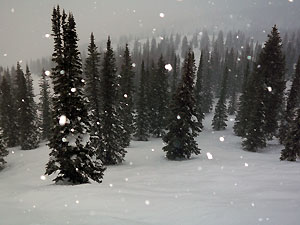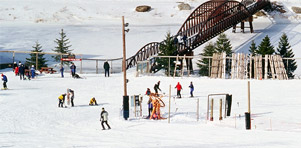Type II Skier (Intermediate)
Moderate skiing at average visual indicator settings
- Prefer a variety of speeds
- Prefer varied terrain
- Type II settings apply to skiers who do not meet all the descriptions of Type I or Type III classifications
We will be staying at Ski Time Square, right in the heart of the ski village, with shopping, dining and après-ski entertainment just steps away and the slopes a short walk away right across the street. We will be staying in a studio plus loft with a bath that sleeps six. We’ll have a patio balcony, fireplace, sauna, Internet service, and cable TV. Join our posse on another trip out west to Steamboat Springs, and hang your ten-gallon hat alongside one of the most preferred properties on the mountain.
Steamboat is actually a complete mountain range: Mount Werner, Sunshine Peak, Storm Peak, Thunderhead Peak, Pioneer Ridge, and Christie Peak. Two-thousand-nine-hundred-sixty-five acres (1,200 hectares) of permitted terrain offer a diversity of trails for all levels of ability.
Mavericks Superpipe is a freerider’s dream. Mavericks is 450 feet long, 56 feet wide and has 18-foot walls and a 22-foot transition. Steamboat’s terrain park adjacent to Mavericks features an outdoor sound system, a variety of rails—kinked, sliders, rainbows, “s” mailboxes, double-barrel—and Mini-Mav, a miniature version of the superpipe with eight-foot walls, perfect for novice riders.
Gladed areas of Pioneer Ridge, Sunshine and Storm Peak are Steamboat’s particular claim to fame, with legendary Champagne Powder™ snow in the trees for the most avid powder hounds.
Travel Info: Best way to Steamboat from the east is through Chicago to Hayden Colorado. Another affordable hub is Dallas Texas.

Early morning snow on Mount Werner
(Photography: Riley Polumbus)
Permitted Acres: 2,965 acres (1,200 hectares)
Trails: 165 named trails
Trail Classification: 14% beginner, 42% intermediate, 44% advanced
Longest Run: Why Not—over 3 miles (4.8 kilometers)
Uphill Capacity: 33,619 per hour
Snowmaking: 375 acres (152 hectares)
Annual Snowfall: 331 inches (859 cm) annually
This is another bucket-list mountain, so get ready to knock off another must-ride hill.
Long Mecca $775.00
Includes seven (7) nights and four (4) days of riding
Shorter Mecca $625.00
Includes five (5) nights and three (3) days of riding
View Ski Time Square accommodations >
A parent or legal guardian must complete and bring along a Minor Permissions Slip for each child age sixteen (16) and under.
Your bindings settings usually follow your batting stance. If you are right-handed and bat right-handed, then you will probably feel most comfortable with your left foot forward (regular). If you are left-handed or bat “lefty,” then you will likely feel right foot forward is more natural (goofy).
These are just guidelines to start. We can help you find the right fit for your ride.

Determining your ski ability is your responsibility!
Your ski ability, height, weight, age, and boot-sole length are used by the shop to determine the visual indicator settings of your ski bindings. Be sure to provide accurate information, as any error may increase your risk of injury. Consult the skier type descriptions to select your classification. These descriptions are compatible with ASTM and ISO documents.
Cautious skiing at lower visual indicator settings
Moderate skiing at average visual indicator settings
Aggressive skiing at higher visual indicator settings